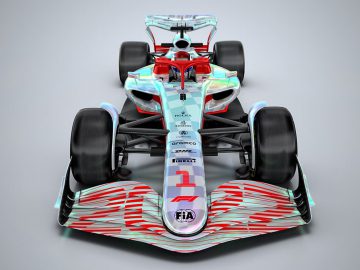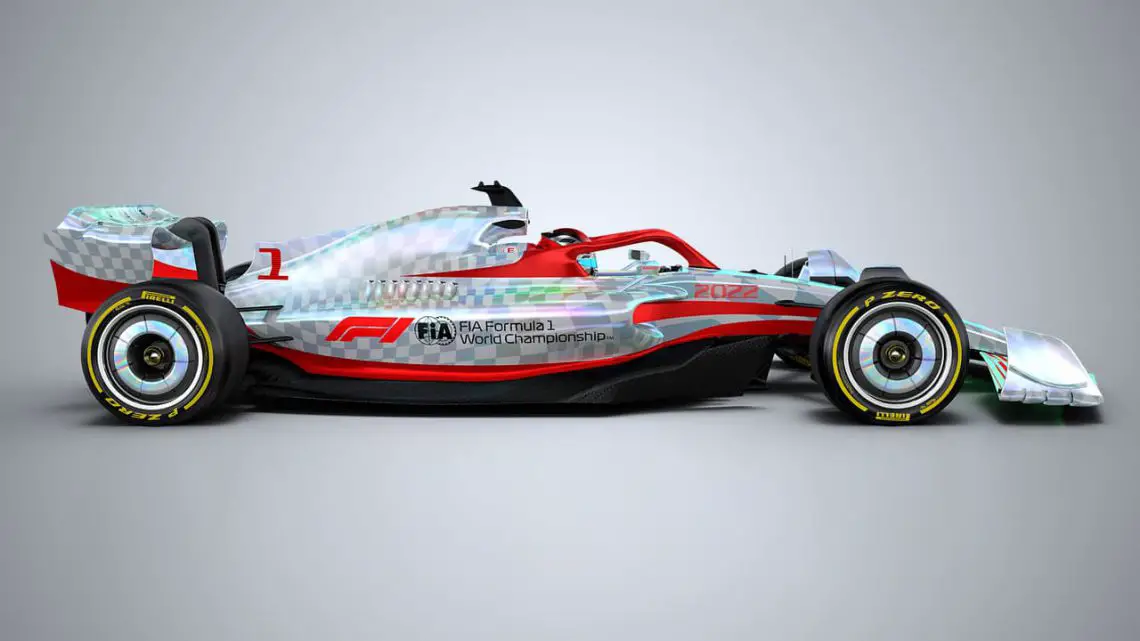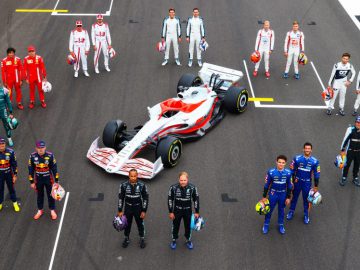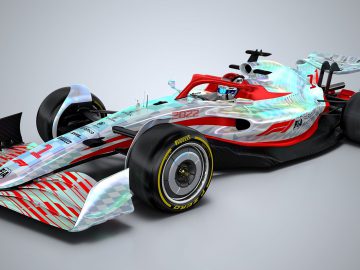Formula 1 in 2022: this is what you need to know about the cars
More action
The main reason for the introduction of the new technical regulations is to make the races more exciting. Especially in the last few seasons it became clear that the teams with the most money to spend had the best chance of winning the championship. F1 therefore wants to bring the field closer together, literally and figuratively, and is doing so with a number of drastic changes.
Aerodynamics
The first thing you notice about the new cars is the simpler shape. Where in previous years the front wing became more and more complex with tiny little carbon pieces to optimize airflow, it now goes back to basics with a simple shape. The same goes for the rear wing, which is now one piece and the endplates are gone. The rear wing will have a moving part for the DRS, which will continue to exist in 2022. The floor has also been modified, with the addition of tunnels that suck the car onto the tarmac for downforce. This is also known as the ‘ground effect’.
Text continues below the images.


‘dirty air’
The new aerodynamics will disrupt the airflow to the rear less in particular. In this way, the F1 cars can drive better behind each other at shorter distances from 2022. Something that has been impossible in recent years due to so-called ‘dirty air’. Dirty air is the annoying airflow caused by a vehicle in front. Turbulence is created which means that the aerodynamics of the driver behind it no longer work optimally, resulting in loss of downforce and grip. With the new aerodynamics, dirty air is a thing of the past. The air is directed upwards, and thus over the next car, instead of against it. Resulting in mutual battles and more tension during the race.
In the video below you can see how sensitive a Formula 1 car used to be. A helicopter disrupts the airflow at Lance Stroll, who is startled by the unexpected movement in the steering wheel. At first it was not clear what caused the movement, but afterwards it turned out to be the dirty air from the rotors.
Text continues below the video.
Bigger wheels
Formula 1 cars will get 18-inch jets. Yet we will not see much of the wheel, because they are largely covered by a hubcap. The hubcaps, like the new aerodynamics, should ensure less polluted air. The tires are again provided by Pirelli. The Italian tire farmer claims with the new tires better steering behavior for the driver and less wear. So much less wear, in fact, that Pirelli thinks that a large part of the races in 2022 will be completed with a one-stop.
Text continues below the image.

A little safer again
In 2022, the FIA also believes that the cars should be safer. With a frontal impact, an F1 car in 2022 should be able to absorb almost 50% more impact and 15% more at the rear. In addition, the nose of the car is longer, so that it can be made stronger. This is to prevent a fatal accident like that of Anthoine Hubert at Spa in 2019, where the chassis broke in half on the side impact. Lessons have also been learned from the crash of Romain Grosjean, because a safe way in which the fuel tank is separated from the chassis without leaks will be introduced in the 2022 car.
Text continues below the image.

Weight
The larger wheels, which weigh 2.5 kg at the front and 3.5 kg at the rear, and the new safety measures also make the car a bit heavier. Where the minimum weight was still 752 kg in 2021, the weight must be at least 795 kg in 2022. So over 40 kg heavier. The lap times are therefore probably a bit slower than last year.
New fuel
The engines are unchanged, unlike the fuel. In 2022, F1 will use a fuel mixture with 10% bioethanol, also known as E10. This type of fuel was introduced in the context of making sport more sustainable. The disadvantage of this is that it produces less power.



